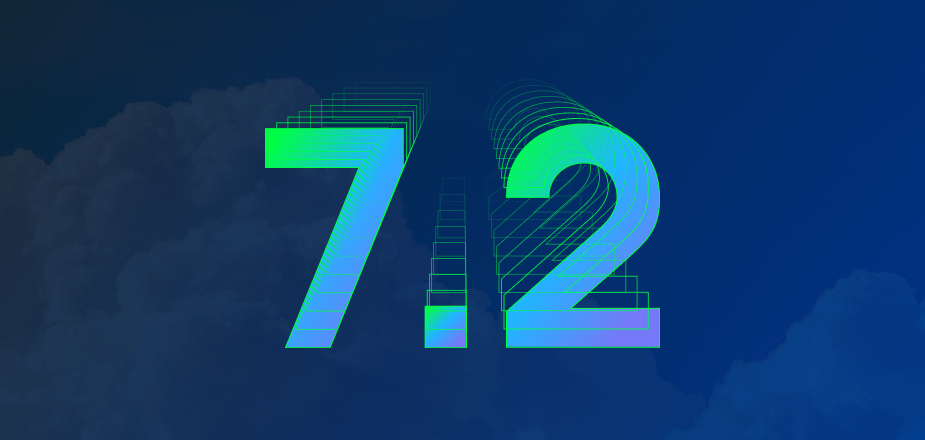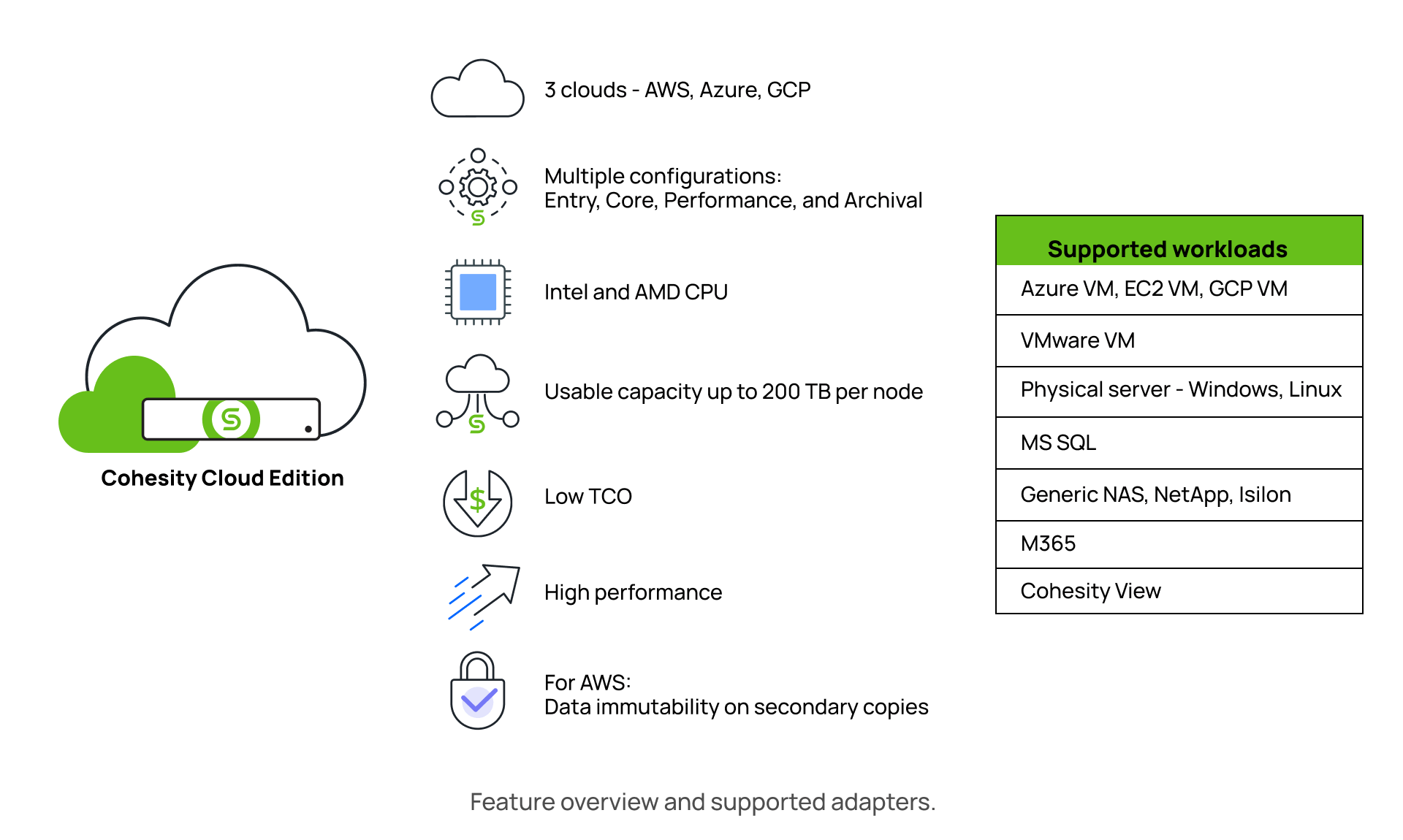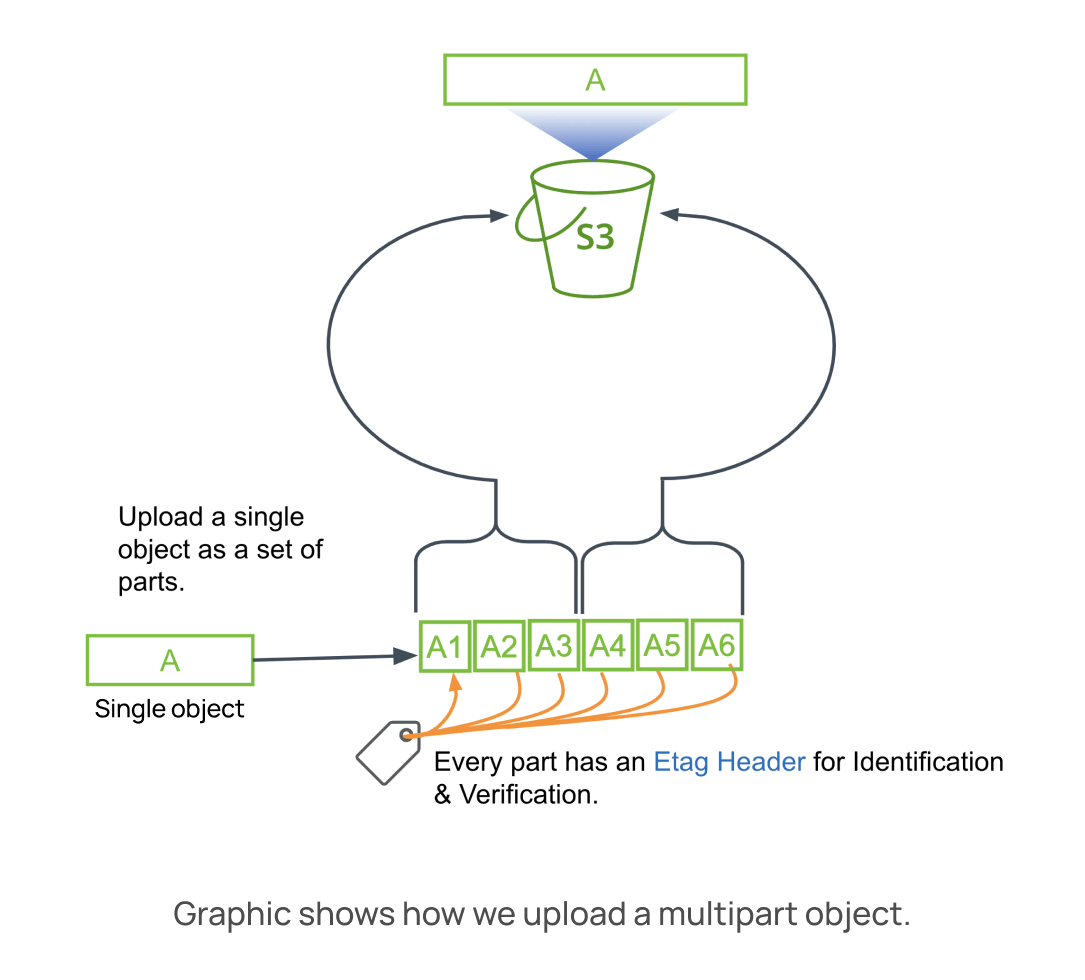Cohesity is excited to announce that Cohesity Data Cloud 7.2 is now generally available. Customers can read the release notes and then download the release.
Customers depend on Cohesity to deliver superior business outcomes and ensure the security and protection of their data estate. We call these the “Five S’s” of product innovation:
- Speed – Recover from business disruptions faster than ever before.
- Security – Detect threats, protect data, and rapidly recover from cyberattacks.
- Scale – Protect and secure all enterprise workloads at a petabyte scale—without compromise.
- Simplicity – Manage your entire data estate with a unified control plane across clouds.
- Smarts – Unlock the power of your data with Gen AI capabilities.
Customers will enjoy several new capabilities in this release that enhance these outcomes. We’ve recapped the release highlights below.
New OAuth 2.0 support in Cohesity Cluster API boosts authorization and foundational security
Cohesity’s platform has long embraced “secure by design” principles. We’re further elevating our platform security with support for OAuth 2.0 authorization in our Cluster APIs. For users that automate workflows with Cluster APIs, this offers you three main benefits:
- Enhanced security: Reduce the risk of credential theft by using access tokens instead of sharing passwords.
- Scalable integration: Simplify connecting automation scripts securely without compromising user data.
- Improved session control: Empower admins and security teams to centrally grant and revoke access permissions to their data from their Identity Provider, enhancing trust and compliance.
OAuth 2.0 with OpenID Connect gives you password-less access to Cohesity REST APIs. If you use an external identity management system like ADFS, you’ll want to use the feature to configure Single Sign-On (SSO) and add SSO user groups to your Cohesity clusters. By centralizing access controls and permissions management, customers can enhance trust and ensure compliance across the board.
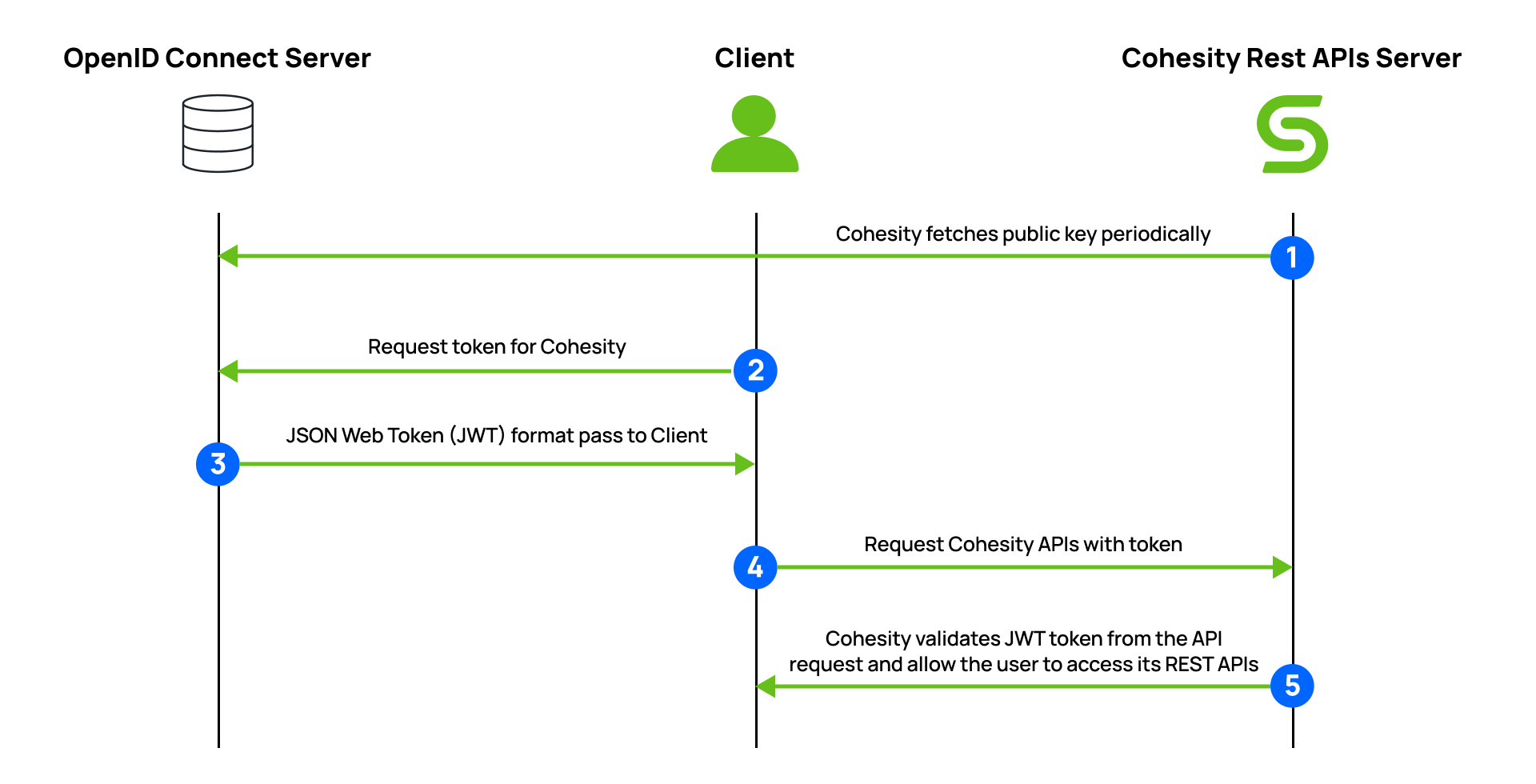
Across-the-board improvements for IBM FlashSystem and NetApp SnapDiff v3
Protecting NAS and SAN environments is critical. Users of IBM FlashSystem and NetApp SnapDiff v3 will appreciate these new capabilities.
- Greater speed and efficiency for IBM FlashSystem: We’ve enhanced the incremental volume/block backup capabilities of IBM FlashSystem with support for incremental backups. Customers will likely realize faster backups, more efficient capture of incremental changes, and shortened backup windows. Even with the incremental volume/block backup capabilities, Cohesity’s fully-hydrated snapshots provide compact storage, strong data protection, and impressive recovery speeds. This enhancement seamlessly integrates volume backup features with IBM FlashSystem, surpassing the conventional snapshot management offered by others in the industry.
- Now GA: NetApp SnapDiff v3 support with integrated object storage: To the delight of our customers, you can now back up, archive, and recover your NetApp SnapDiff v3 environment, alleviating the load on Netapp. Popular features like data immutability and robust archival support are now available for this block-based backup workload. A notable aspect of this feature is that SnapDiff’s key requirement of object storage is fulfilled by the attached Cohesity cluster, which provides a seamless and integrated backup operation. By eliminating the need for an external S3 target, data stays within Cohesity, enhancing security and simplifying data management operations.
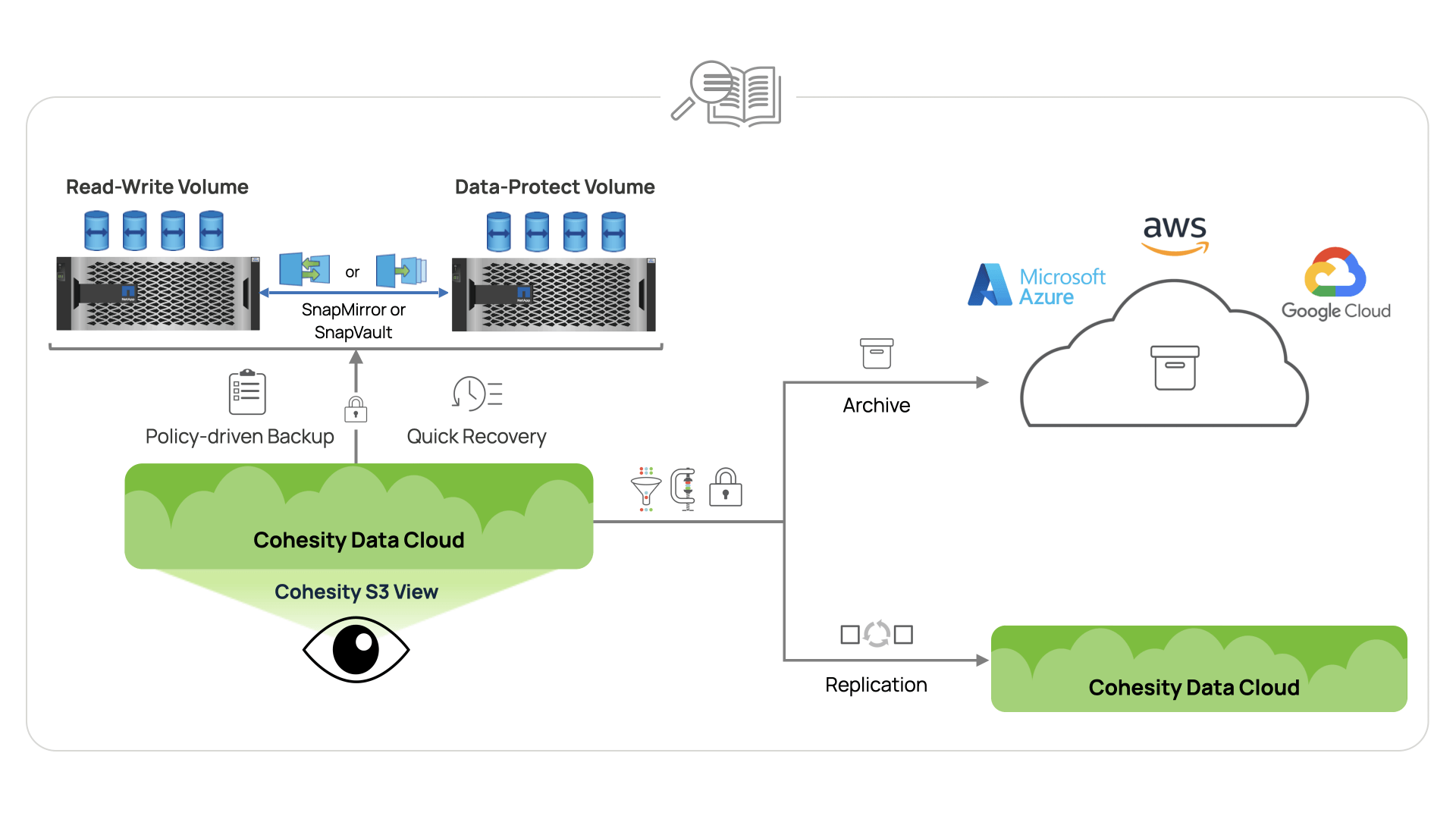
Prevention keeps your systems running smoothly
Simplified source maintenance
We think you’ll like the new maintenance mode feature for all registered Cohesity data sources, including VMs, hypervisors, cloud, etc. Use this enhancement to notify the Cohesity DataProtect cluster of scheduled maintenance tasks. With this simple action, you can prevent backup failures, streamline operations, and gain the flexibility to schedule or create maintenance plans whenever you desire.
Kubernetes: More control for backup and recovery
Cohesity Data Cloud 7.2 includes nifty capabilities for Kubernetes deployments, offering you more efficiency and control over your backup and recovery workflows. The features below apply to all supported versions of Kubernetes in the product.
- Dedicated VLAN support for Kubernetes: You can now configure separate VLANs for efficient data traffic management. Create dedicated networks to route backup and recovery traffic seamlessly within the Kubernetes cluster. This feature improves performance and helps you meet service level agreements (SLA) for Kubernetes deployments.
- Granular PVC backup and recovery offer greater customization: Kubernetes administrators can toggle the inclusion of Persistent Volume Claims (PVCs) within namespaces during the backup and restore processes. Use this feature to strategically select PVCs for backup, improving the effectiveness of your data protection strategy.
Enhanced modern backup and recovery for Cassandra and MongoDB
The massive growth in enterprise data is partly due to the use of more and more data sources. In particular, enterprises are using more modern databases like Apache Cassandra and MongoDB. In version 7.2, we offer more capabilities for both of these popular databases.
- Cassandra PITR streamlines recovery and improves security: Cohesity DataProtect includes upgrades to its Cassandra support with Point-in-Time-Recovery (PITR). These enhancements are designed to simplify restoration processes, accelerate recovery times, and improve adherence to enterprise SLAs. These enhancements enable effective readiness for unforeseen disruptions. The introduction of PITR reinforces business continuity, helping you to tackle unexpected disruptions swiftly. Additionally, the new Cassandra system keyspace protection feature provides a simple, secure way to retrieve essential Cassandra metadata following a system crash. The result: crucial protection against the potential loss of complete Cassandra data.The new features support both Apache Cassandra and DataStax Enterprise.
- MongoDB Zones and Shard tags boost the speed of cyber recovery: Cohesity Data Cloud 7.2 boosted its performance for MongoDB with zone-based data storage. This approach efficiently guides read and write tasks to designated shards, enabling critical data to reside on shards in close geographical proximity to your application servers. As a result, the MongoDB backup connector now stores zone information, enabling the recovery agent to apply these zones before initiating data transfer, enhancing the speed and simplicity of the data recovery processes. The new features support the open-source and commercial versions of MongoDB.
Get more from Cohesity DataProtect: Expand your deployment
The journey to modernize your data security and management practices often starts with Cohesity DataProtect for on-premises environments. From there, many customers want to expand into the public cloud, improve their resiliency with a cyber vault, and protect other data types.
To this end, we’d like to highlight a few other capabilities that can help you address your expanding data estate.
Cohesity Cloud Edition: Strike the right balance of convenience, control, and cost
For organizations shifting to the cloud for enhanced flexibility, accessibility, and scalability, Cohesity Cloud Edition builds upon existing functionality, offering a robust solution for securing and managing data in the public cloud. It grants customers greater control over deployment while entrusting the underlying infrastructure management to cloud providers. Cohesity Cloud Edition seamlessly integrates with our control plane, so you can centrally administer all your Cohesity clusters no matter where they run.
A new version of Cohesity Cloud Edition is now generally available on three major cloud platforms: Amazon Web Services, Azure, and Google.
With this latest release, customers can achieve a lower TCO and better performance offering multiple configurations, up to 200 TB per node, that simplify operations and reduce overall storage costs. Compared to prior versions of the cloud edition, the new version can help you realize over 100% ingest throughput, require up to 50% fewer nodes per cluster, and reduce costs by up to 66% per terabyte.
Use Cohesity Cloud Edition to secure and protect workloads like VMware, physical servers, M365, NAS (Generic NAS, NetApp, Isilon), SQL, and cloud VMs. The AWS, Azure, and Google Cloud versions support selected compute services from each respective cloud provider.
Another new feature for AWS users: Cohesity Cloud Edition supports write once, read many (WORM) capabilities for cloud archives in AWS storage targets using incremental forever archival. The combination of Cohesity Datalock and support for AWS object lock provides end-to-end immutability from both the Cohesity and storage end. This approach delivers heightened security with simplified operations, faster data access, and TCO by eliminating the need for frequent full backups.
More efficient cyber vaulting in AWS
Cyber vaulting is a best practice for data management and protection. It ensures the secure, offsite storage of critical data, protecting it from cyber threats, natural disasters, and hardware failures. Regular, automated backups to a secure, isolated environment ensure data integrity and availability during recovery scenarios.
Cohesity FortKnox, our award-winning cyber vault as a service, is a popular way for organizations like yours to improve their cyber resilience. The service was enhanced with an “incremental forever” archive approach. This method helps users reduce their network costs by eliminating the need for periodic full backups.
These new capabilities are available as a controlled release to select FortKnox users. Contact your Cohesity account team for access.
Learn more about cyber vaulting and why it matters in this expert-led demo.
SmartFiles: New enhancements for unstructured data protection
Cohesity SmartFiles is a fantastic way to protect and manage your unstructured data by optimizing for cost, scale, and efficiency. Several new enhancements are now available to SmartFiles customers as part of the latest enhancements to the Cohesity Data Cloud release:
- File aging policies: SmartFiles now supports file aging policies, allowing administrators to automate capacity recovery or to maintain compliance directives by scheduling the deletion of data based on modification or creation time parameters.
- Improved performance: Users will notice speedier multipart uploads and other common tasks.
- Extended lifecycle management: Lifecycle management for objects has been extended to cover object locking and versioned buckets. Now, administrators can reclaim storage in even more scenarios than before.
Read more in the SmartFiles release notes.
Take the next step: Get started with Cohesity Data Cloud 7.2 today
Enterprise IT leaders and practitioners are tasked with improving cyber resilience for their entire data estate in the face of unpredictable threat vectors and a changing regulatory landscape. Cohesity Data Cloud 7.2 offers industry-leading capabilities to help organizations achieve their desired outcomes. Take the next step and get started with Cohesity Data Cloud 7.2 today:






